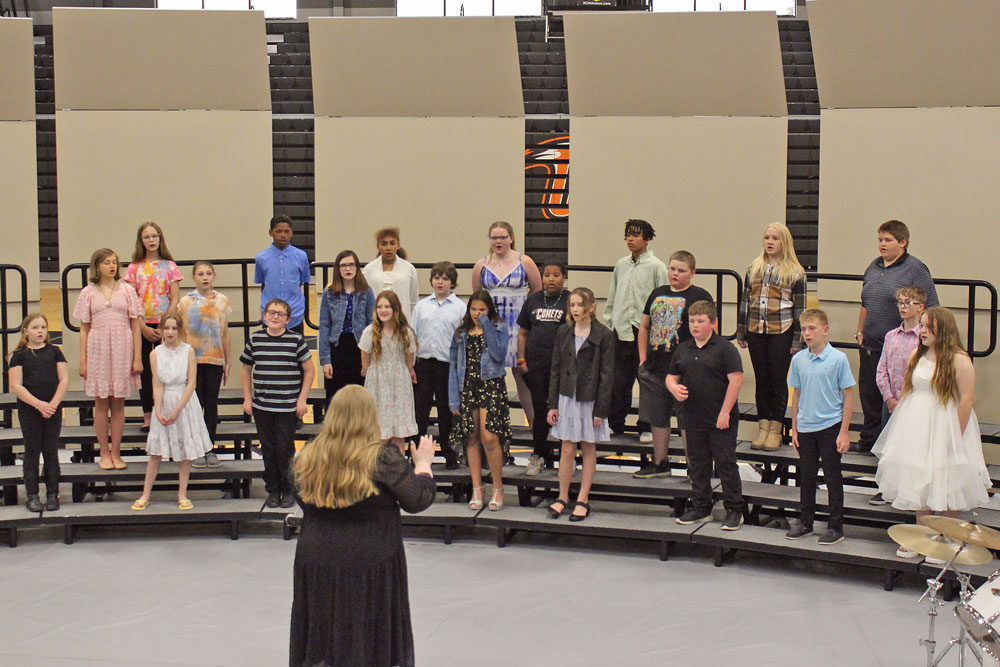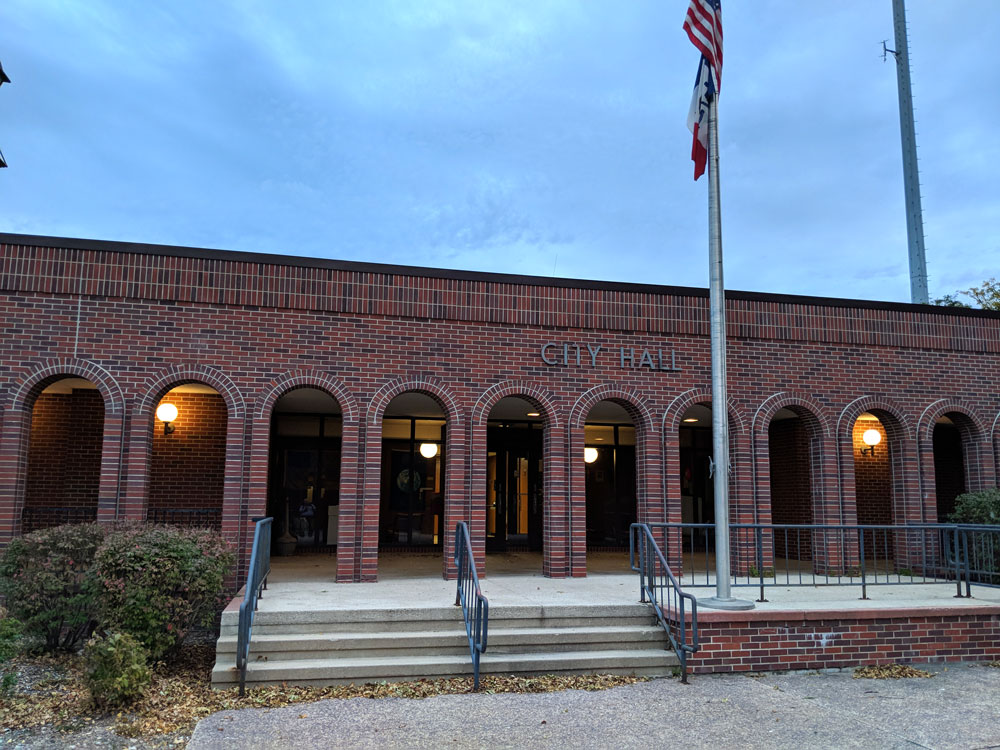CCSD Board acknowledges alternative auditorium idea
By Travis Fischer, tkfischer@charlescitypress.com
An alternative idea about how to address the Charles City School District’s need for a new auditorium was discussed and dismissed during the school board’s regular meeting on Monday, April 10.
Both board members and members of the community were surprised to see a new option on the agenda as discussion continues about the next steps the district will take towards the high school facility’s project.
Up until now, the viable options in front of the board were considered to be a matter between bonding for high school renovations and a new auditorium together, separately, or not at all. The new option introduced, regarding the auditorium, was a suggestion to remodel the existing high school gymnasium into an auditorium rather than build a new one from the ground up.
The unexpected appearance of the idea drew sharp criticism from members of the Friends of the Performing Arts (FOPA), whose members have been working toward raising capitol to help support the construction of a new building. Several members attended the meeting to express their displeasure at not only feeling blindsided by the proposal, but also their disfavor of idea as a whole.
From limited space for production equipment to low quality acoustics, the FOPA members present detailed a multitude of ways that they felt a converted gymnasium would not be able to facilitate a quality performance experience for both students and audience.
“If Charles City turned a gymnasium into a performing arts center we would be ridiculed and snickered at,” wrote FOPA co-chair Nancy Western in a letter delivered to the board.
“The students deserve a state-of-the-art auditorium,” said Linda Brant.
The group also questioned the economic benefit of the idea, noting that even if converting a gymnasium into an auditorium could be done for less than the estimated $9 millions it would take to build new, it would hasten the need for the district to build a new gymnasium in its place.
“This was an ill-conceived notion that was given too much credence and too much legitimacy by being put on the agenda,” said Janiece Bergland, who is both FOPA co-chair and a member of the school board.
It was noted that the proposal did not come from any member of the school board, but Superintendent Dr. Anne Lundquist stated that several people in the community had mentioned it to her as possible route.
“It was something that was brought up in the community and for transparency purposes we’re discussing it so they know that we heard them,” said board President Pat Rottinghaus.
“I think exploring it helps them understand that it’s not as viable as one might think,” said Lundquist.
While the board was unanimous in its rejection of the new proposal, opinions about the remaining options were more divided, with board member Dr. David Schrodt continuing to advocate for a second appraisal of the high school’s facility needs.
“I just don’t like the idea that we have an estimate and we don’t have any other estimates for a multi-million dollar project,” said Schrodt.
The district has already spent tens of thousands of dollars for Estes Construction to develop high school facility renovation plans, which include a range of estimated costs for the project once it is bid out. While Director of Operations Jerry Mitchell expressed his own confidence in their assessment, Schrodt still wants a second opinion.
“I want somebody to come in and tell me what the actual needs are,” said Schrodt. “Maybe there’s a less expensive way that’s just as good.”
While Schrodt is adamant about seeking out a less expensive option, the rest of the board members expressed their skepticism that other engineering firms would come back with such plans.
“Would you want to see another one and another one until there’s one that aligns with what you think?” asked board member Josh Mack.
While the rest of the board was not on board with hiring additional engineering firms, the idea was brought up about collecting testimonials from other districts about Estes’ accuracy and effectiveness to ease Schrodt’s concerns.
Outside of the debate of whether or not to do bond for the project at all, there was also debate among the board about whether to split the $27 million high school facility and auditorium project into two parts and when to hold that vote.
Board member Bergland, speaking for FOPA, stated that her group is committed to raising funds to offset the cost of the auditorium, but would have a better idea of what that total amount would be next year.
While knowing how much FOPA would be bringing to the project would lower the cost to the taxpayer, and thus improve its likelihood of passing a referendum, another delay in the project would also inevitably add to its overall expense.
School district Director of Finance Evan Marten noted that while a referendum vote would authorize the district to borrow up to the full cost of the project, the actual amount they borrow would be done in blocks as needed. So in a situation where FOPA was able to donate a substantial amount of funding for the project, it would mean the district would borrow less.
“You levy the amount that you need,” said Marten.
Meanwhile, debate continued over whether to hold a referendum on the two projects together or separately, with it being unknown how the voting public will favor one or the other and if having them together or apart hurts or helps either’s chances of passing.
Discussion will continue in two weeks at the next meeting.









Social Share